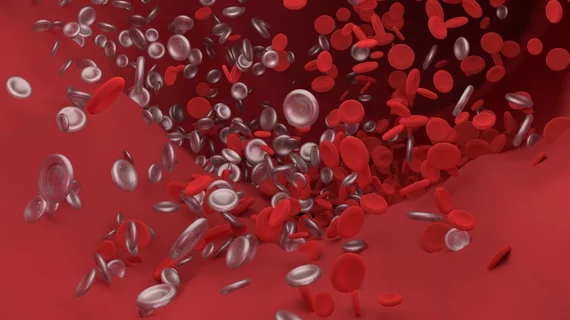Pairing FFR, OCT imaging predicts risk of major adverse cardio events in patients with diabetes
New research suggests combining fractional flow reserve with optical coherence tomography (OCT) imaging can better identify high-risk lesions in patients with diabetes.
The findings come by way of the COMBINE (OCT-FFR) trial, which was presented Wednesday at the Transcatheter Cardiovascular Therapeutics annual scientific meeting. Using this approach, the authors noted, may help predict patients’ risk of future adverse cardiovascular events, such as death or stroke.
“In patients with diabetes, COMBINE (OCT-FFR) showed that the presence of a high-risk plaque (thin cap fibroatheroma) is a strong predictor of future major adverse cardiac events (MACE), despite lack of ischemia,” Elvin Kedhi, MD, PhD, a professor of cardiology at Silesian Medical University in Poland, said in a statement.
The trial enrolled patients with diabetes mellitus and stable or acute coronary syndromes who had one or more lesions not directly responsible for their condition. Each also had a 40%-80% diameter narrowing in their arteries and underwent FFR. All participants were put into one of three groups depending on if they had TCFA plaque: (1)TCFA negative, (2) TCFA positive, or (3) those whose target lesions with an FFR greater than 0.80 who were sent for revascularization.
The trial's primary endpoint compared outcomes in group 1 to those in group 2, particularly focusing on the incidence of targeted lesion-related MACE due to unstable or progressive angina at 18 months. Death, target vessel myocardial infarction, clinically-driven target lesion revascularization, or hospitalization occurred in 13.3% of group 2 and only 3.1% of group 1.
“Patients with high-risk plaques have a significant increase in target-lesion related MACE and MI compared to patients without TCFA at 18 months,” Kedhi added in the Wednesday statement. “These findings indicate that combining FFR and OCT can improve the accuracy of high-risk lesion and patient identification and should be adopted in practice.”

